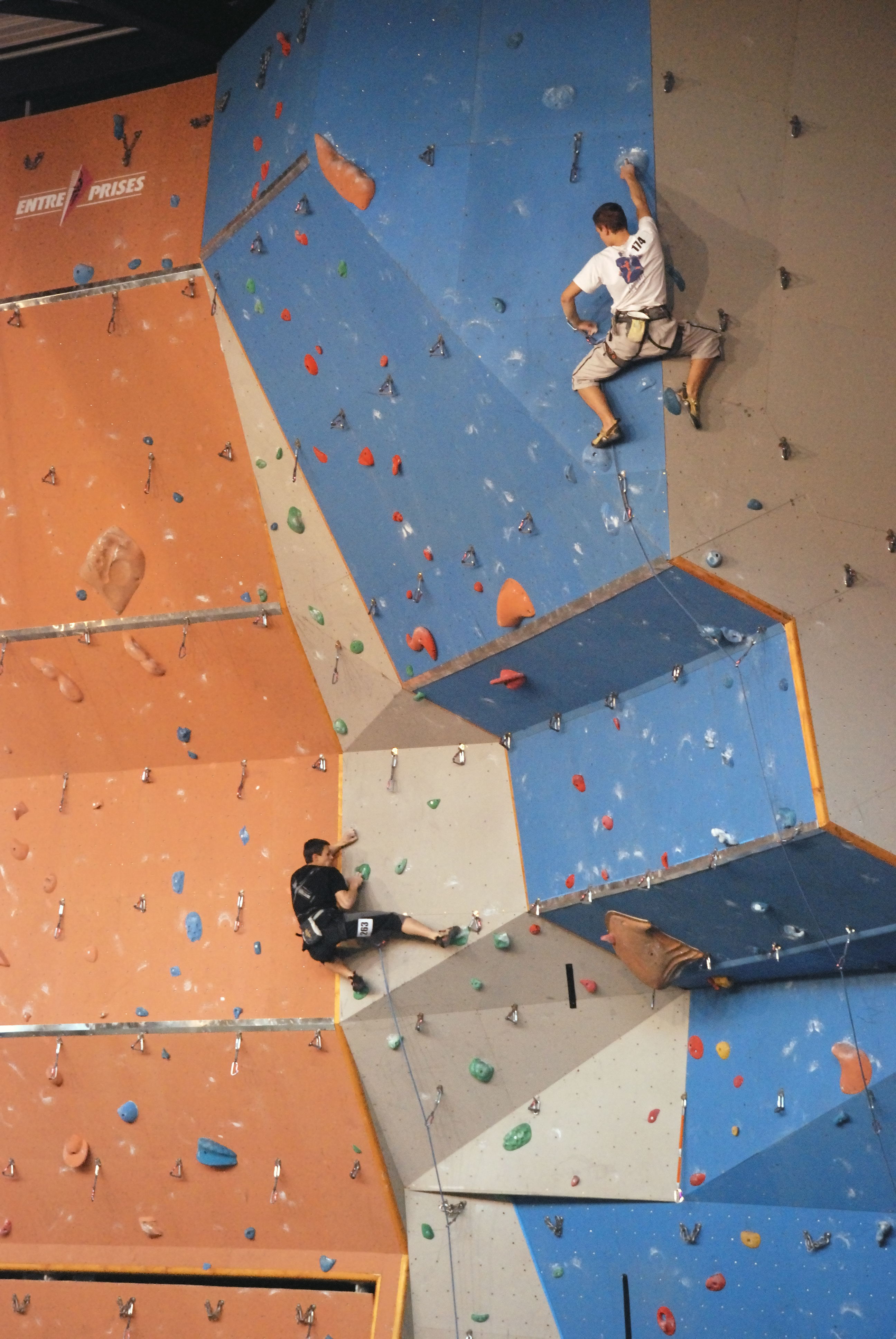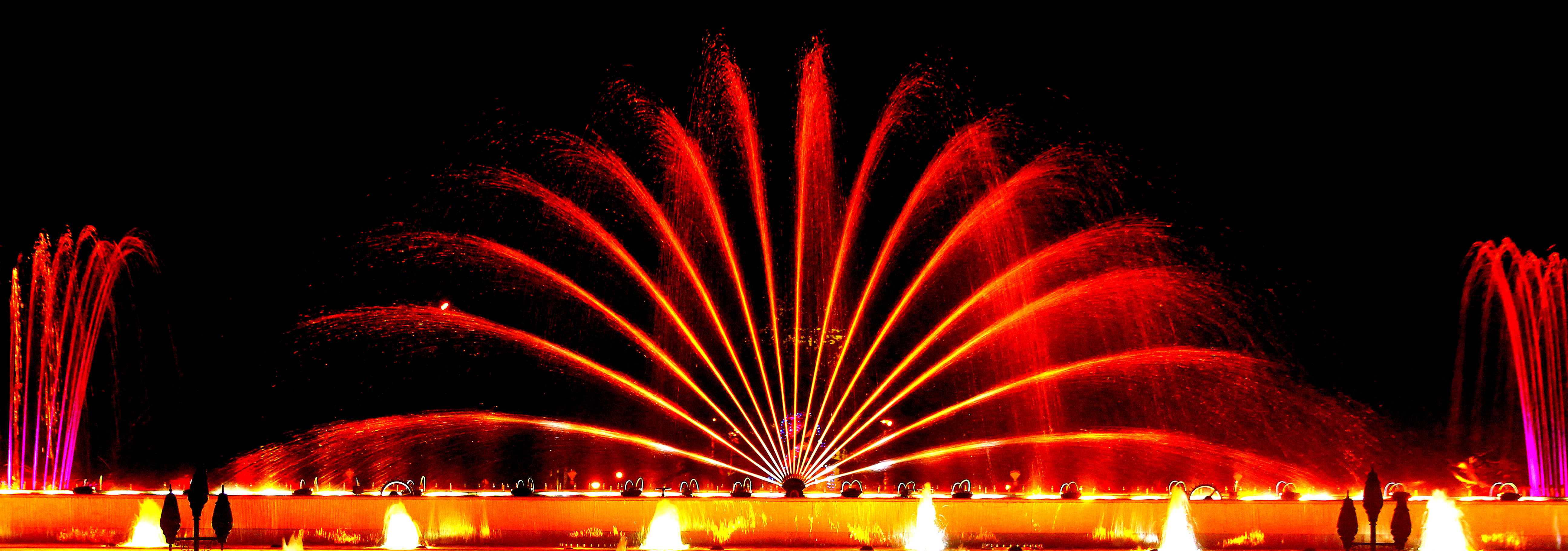|
Jayang Station
Jayang station () is a metro station on Seoul Subway Line 7. It is located in Jayang-dong in the Gwangjin District administrative district of Seoul. It is the only station in South Korea to be located on the underside of a bridge, beneath Cheongdam Bridge. The station also runs underneath a highway with two exits being south of the highway and two north. The south exits serve Ttukseom Hangang Park, while the north exits serve Jayang 3-dong and Jayang 4-dong which contain some residential towers with small shops and other mixed commercial and residential areas. The station is serviced by a single bus route which is located at exit 4. Before Line 7 opened the station was known as Jayang Station (). Station layout History Jayang station was opened on August 1, 2000. It was part of the last section of Line 7 to be completed creating a continuous track from Jangam station to Onsu station. Facilities The station is elevated with 2 side platforms. At either end of the station ... [...More Info...] [...Related Items...] OR: [Wikipedia] [Google] [Baidu] |
Jayang-dong
Jayang-dong () is a '' dong'' (neighborhood) of Gwangjin District, Seoul, South Korea. Name origin During the Joseon period, the name of Jangyang-dong was "Jamajang" (雌馬場), which translates to "female horse field." The term "jamajang" refers to a female horse. In the early days of the Joseon Dynasty, there was a legend that if one were to raise a thousand horses, a mythical creature called Yongma (龍馬), a dragon-horse, would be born. This led to a great interest in horse breeding in various regions. Jangyang-dong, being an area where fertile sediments flowed through the Han River and accumulated, had vast natural fields, making it advantageous for grazing horses. As a result, a significant number of female horses were raised in this area. Having a large number of female horses in a ranch facilitates the mass breeding of horses through reproduction. The name "Jamajang" was later changed to "Jamajang-ri" (雌馬場里), and during the period of Japanese colonial rule, the Ch ... [...More Info...] [...Related Items...] OR: [Wikipedia] [Google] [Baidu] |
Naver
Naver (; stylized as NAVER) is a South Korean online platform operated by the Naver Corporation. The company's products include a search engine, email hosting, blogs, maps, and mobile payment. History Naver was the first Korean web provider to develop its own search engine. The company was founded on June 2, 1999, and is headquartered in Seongnam, South Korea. Naver is a combination of 'navigate', which means to navigate the Internet, and the suffix '-er', which means person, which means a person who navigates the vast ocean of information on the Internet. The Naver provides community services including blogs and cafes, other convenient services such as knowledge, shopping, maps, books, e-mail and naver tool bar. In August 2000, Naver launched its 'comprehensive search' service, which allows users to get a variety of results from a single search query on one page, organized by type, including blogs, websites, images, and web communities. Naver became an early pioneer ... [...More Info...] [...Related Items...] OR: [Wikipedia] [Google] [Baidu] |
Metro Stations In Gwangjin District
Metro may refer to: Geography * Metro City (Indonesia), a city in Indonesia * A metropolitan area, the populated region including and surrounding an urban center Public transport * Rapid transit, a passenger railway in an urban area with high capacity and frequency * The public transport operator of city or metropolitan area * The transportation authority of city or metropolitan area * The urban rail transit system of a city or metropolitan area Rail systems Africa * Algiers Metro in Algiers, Algeria * Cairo Metro in Cairo, Egypt * Lagos Rail Mass Transit in Lagos, Nigeria Asia * Busan Metro, Republic of Korea (South Korea) * Daegu Metro, Republic of Korea (South Korea) * Dhaka Metro, Bangladesh * Doha Metro, Qatar * Dubai Metro, United Arab Emirates (U.A.E.) * Kaohsiung Rapid Transit, Taiwan * Lahore Metro, Pakistan * Manila Metro Rail Transit System, the Philippines * New Taipei Metro, Taiwan * Osaka Metro, Japan * Riyadh Metro, Saudi Arabia * Seoul Metropolitan Subway, R ... [...More Info...] [...Related Items...] OR: [Wikipedia] [Google] [Baidu] |
Low-rise
A low-rise is a building that is only a few stories tall or any building that is shorter than a high-rise, though others include the classification of mid-rise. Definition Emporis defines a low-rise as "an enclosed structure below 35 metres 15 feetwhich is divided into regular floor levels". The city of Toronto defines a mid-rise as a building between four and twelve stories. They also have elevators and stairs. Shorter structures may only have stairs. Characteristics Low-rise apartments sometimes offer more privacy and negotiability of rent and utilities than high-rise apartments, although they may have fewer amenities and less flexibility with leases. It is easier to put fires out in low-rise buildings. Within the United States, due to the legal-economic and modernist perspectives, low-rises can in some cities be seen as less luxurious than high-rises, whereas within Western Europe (for historical identity and legal reasons) low-rise tends to be more attractive. Some busi ... [...More Info...] [...Related Items...] OR: [Wikipedia] [Google] [Baidu] |
Climbing Wall
A climbing wall is an artificially constructed wall with manufactured grips (or "holds") for the hands and feet. Most walls are located indoors, and climbing on such walls is often termed indoor climbing. Some walls are brick or wooden constructions but on modern walls, the material most often used is a thick multiplex board with holes drilled into it. Recently, manufactured steel and aluminum have also been used. The wall may have places to attach belay ropes, but may also be used to practice lead climbing or bouldering. Each hole contains a specially formed t-nut to allow modular climbing holds to be screwed onto the wall. With manufactured steel or aluminum walls, an engineered industrial fastener is used to secure climbing holds. The face of the multiplex board climbing surface is covered with textured products including concrete and paint or polyurethane loaded with sand. In addition to the textured surface and hand holds the wall may contain surface structures su ... [...More Info...] [...Related Items...] OR: [Wikipedia] [Google] [Baidu] |
Musical Fountain
A musical fountain, also known as a fairy fountain, prismatic fountain or dancing fountain, is a type of choreographed fountain that creates aesthetic designs as a form of entertainment. The displays are commonly synchronised to music and also feature lighting effects that are refracted and reflected by the moving water. Contemporary multimedia fountains can include lasers, video projection and three-dimensional imagery. Installations can be large scale, employing hundreds of water jets and lights, and costing into the millions of dollars. Techniques tend to be complex, and require mechanical, hydraulic, electrical, and electronic components that are usually kept out of view. Fountains that are choreographed to music The earliest musical fountains were played manually by a live operator, who usually controlled pumps or valves and sometimes lights by way of switches on a control panel. Music was almost always live. Later, choreography could be prerecorded on a punched paper car ... [...More Info...] [...Related Items...] OR: [Wikipedia] [Google] [Baidu] |
Onsu Station
Onsu Station () is a station on the Seoul Subway Line 1 Seoul Subway Line 1 (dubbed ''The Dark Blue Line'') of the Seoul Metropolitan Subway is a rapid transit and commuter rail line which links central Seoul, South Korea to Yeoncheon station, Yeoncheon in the northeast, Incheon in the southwest, an .... It was the former western terminus of Seoul Subway Line 7. A westward extension of Line 7 (from Onsu to Bupyeong-gu Office) was completed in October 2012. It is near the border of Seoul and Bucheon. Station layout Line 1 Line 7 Vicinity *Exit 1: St. Peter's School *Exit 2: Ojeong Elementary School *Exit 3: Sungkonghoe University *Exit 4: Yuhan College *Exit 5: Donggok Elementary School *Exit 8: Oryu Elementary School, Wooshin Middle & High Schools References Seoul Metropolitan Subway stations Metro stations in Guro District, Seoul Railway stations in South Korea opened in 1988 {{Seoul-metro-station-stub ... [...More Info...] [...Related Items...] OR: [Wikipedia] [Google] [Baidu] |
Mixed-use Development
Mixed use is a type of urban development, urban design, urban planning and/or a zoning classification that blends multiple uses, such as residential, commercial, cultural, institutional, or entertainment, into one space, where those functions are to some degree physically and functionally integrated, and that provides pedestrian connections. Mixed-use development may be applied to a single building, a block or neighborhood, or in zoning policy across an entire city or other administrative unit. These projects may be completed by a private developer, (quasi-)governmental agency, or a combination thereof. A mixed-use development may be a new construction, reuse of an existing building or brownfield site, or a combination. Use in North America vs. Europe Traditionally, human settlements have developed in mixed-use patterns. However, with industrialization, governmental zoning regulations were introduced to separate different functions, such as manufacturing, from residential area ... [...More Info...] [...Related Items...] OR: [Wikipedia] [Google] [Baidu] |
Gwangjin-gu
Gwangjin District () is one of the 25 districts of Seoul, South Korea. It is located on the north bank of the Han River on the eastern end of Seoul. The district was split from the neighboring Seongdong District in 1995. Gwangjin District is home to Konkuk University and Sejong University. History In 1949, the district was initially part of the administrative area of Goyang-gun. On August 13, 1949, Goyang-gun's Ttukdo-myeon (an administrative district) was incorporated into Seoul, leading to the establishment of the Ttukdo Branch Office in the newly formed city. By 1950, there was a significant change when the district's naming convention shifted. The term ' ri,' used to describe smaller administrative units, was replaced with ' dong,' a term signifying urban districts, marking the first major administrative change in the region. This was followed by further restructuring, such as the dissolution of the Ttukdo Branch Office in 1964, with its jurisdiction being incorporate ... [...More Info...] [...Related Items...] OR: [Wikipedia] [Google] [Baidu] |

